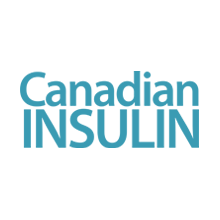Across obesity care, GLP-1 drugs now shape prescribing trends and patient conversations. Understanding what drives demand, who qualifies, and how risks are managed helps set realistic expectations.
Key Takeaways
- Demand drivers: clinical results, broader eligibility, and wider awareness.
- Risks exist: mostly gastrointestinal, with rare safety warnings.
- Forms differ: weekly injections and a daily oral option.
- Coverage varies: access depends on plan rules and documentation.
Why GLP-1 Drugs Are Driving Prescriptions
These medicines are glucagon-like peptide-1 receptor agonists (gut-hormone mimics) that help regulate appetite, gastric emptying, and glucose. Clinically meaningful weight loss, combined with cardiometabolic benefits, has raised interest among patients and clinicians. As awareness grows, new starts increase and persistence may improve when patients see steady changes.
Policy and cultural shifts amplify this effect. More employers and payers are evaluating obesity as a chronic disease, not a lifestyle choice. This framing supports longer-term treatment plans and ongoing monitoring. For a broader population view, see Lowering Obesity Rates for context on public-health impacts.
Why GLP-1 Drugs Are Driving Prescriptions
Growth also traces to product design. Weekly pens make therapy simpler to schedule, and smartphone-based reminders can help adherence. Some patients report early appetite changes, which can reinforce nutrition goals and reduce caloric intake. Still, managing expectations matters, because weight change often varies and plateaus can occur despite consistent use.
Clinical programs increasingly pair pharmacotherapy with nutrition, sleep, and activity plans. This integrated approach may support healthier trajectories and lower cardiometabolic risk. Interest in durability, maintenance strategies, and tapering has followed, as people plan for multi-year management rather than short bursts of treatment.
Clinical Effects and Common Risks
These agents can improve glycemic control and reduce appetite in many users. Common glp-1 side effects include nausea, vomiting, diarrhea, and constipation. Slow dose escalation and mindful meal timing may reduce early gastrointestinal discomfort. Clinicians often evaluate hydration status and monitor for signs of intolerance during initiation and adjustments.
Rare but serious warnings include pancreatitis and gallbladder events noted in labeling. For an overview of labeled adverse reactions, consult the FDA Wegovy label for safety categories and monitoring concepts. Cardiometabolic considerations are active research areas; for related perspectives, see Wegovy and Your Heart for discussion of hemodynamic effects and precautions, and Mounjaro Heart Benefits for emerging cardiovascular findings.
Who Qualifies and Access Patterns
Typical criteria for anti-obesity pharmacotherapy include a body mass index (BMI) threshold or the presence of weight-related comorbidities. Coverage policies vary by insurer and employer, with prior authorization often requiring documentation of attempts at lifestyle measures. Clinicians may also screen for contraindications and assess concurrent medications that could influence tolerability.
Interest extends beyond diabetes care, including glp-1 weight loss non diabetic populations when eligibility criteria are met. Real-world use depends on plan design, out-of-pocket costs, and local supply. If you’re evaluating non-diabetic use, see Ozempic for Non-Diabetics for context on clinical framing and precautions. For a broader set of educational resources, browse the Weight Management library to compare approaches and monitoring points.
Forms, Dosing, and Adherence
Most agents are once-weekly injections administered subcutaneously with dose-escalation schedules. Device usability matters because consistent technique supports consistent exposure. Some patients prefer a daily oral option, such as glp-1 pills, when available and appropriate. Each form has trade-offs in convenience, absorption variability, and routine-building.
Practical choices often reflect lifestyle and adherence needs. For daily oral therapy details, see Rybelsus Semaglutide Pills, which outlines formulation and use scenarios. If weekly devices fit better, see Ozempic Semaglutide Pens for device form factors and pen-handling basics. Adherence planning should include reminders, side-effect mitigation strategies, and follow-up intervals.
Market Landscape and Options
Patients and clinicians consider labeled therapies, emerging combinations, and pipeline molecules. A practical glp-1 drugs list typically includes subcutaneous semaglutide and liraglutide for obesity, with other incretin combinations advancing in trials. Product selection weighs efficacy evidence, tolerability, device preferences, and specific comorbidities.
Within currently approved options, consider product characteristics and indications. For product-page overviews, see Wegovy for obesity indications and device details, and Saxenda 6 Mg Ml for daily injection comparisons. For pipeline context and recent readouts, consult Orforglipron Trials Update to understand how oral incretins may change future choices.
Long-Term Considerations and Safety Signals
Chronic weight management requires calibration between benefits and risks. Questions about glp-1 long-term side effects reflect a need for continued surveillance, especially as larger populations stay on therapy for years. Data collection from clinical programs and registries will help clarify maintenance strategies and rare adverse events. Decisions often balance metabolic improvements against the burden of continued pharmacotherapy.
Guidelines emphasize individualization, periodic reassessment, and attention to comorbid conditions. For broad treatment principles and safety context, refer to the ADA Standards of Care for pharmacologic approaches and monitoring recommendations. Long-term planning also includes discontinuation protocols and relapse mitigation, which require patient-specific pacing and behavioral supports.
Brand-Specific Considerations
Different products share mechanisms but diverge in dose schedules, device formats, and labeling. Understanding brand-specific warnings helps set expectations and reduces surprises. For example, some users focus on ozempic side effects when evaluating daily routines, travel, and meal planning. A brand’s label details adverse reactions, contraindications, and situations requiring prompt medical attention.
Stopping and restarting therapy is another practical concern with variable outcomes. Abrupt discontinuation can lead to increased appetite and weight regain. For behavior and planning strategies, see Prevent Ozempic Rebound for structured approaches to transition, maintenance, and relapse prevention.
Comparing Agents for Weight Outcomes
Head-to-head trials remain limited, and cross-trial comparisons have caveats. When patients ask which glp-1 is best for weight loss, clinicians typically consider efficacy ranges, tolerability, and cardiometabolic factors alongside personal preferences. Device comfort, dosing cadence, and prior experiences can influence adherence and ultimate effectiveness in real-world settings.
To explore structured comparisons, see Best GLP-1 for 2025 for a curated evidence summary. If you are comparing incretin classes, review Orforglipron vs Tirzepatide and Orforglipron vs Rybelsus for mechanism differences and practical trade-offs.
Recap
Demand rises because clinical benefits, broader eligibility, and treatment framing align. Risks are manageable for many, but individual variability and rare events require vigilance. Choosing a product and form is a personalized decision balancing evidence, preferences, and access constraints. Ongoing follow-up supports safer use and long-term progress.
Note: Labels, coverage policies, and clinical guidance evolve. Always review current product labeling and locally applicable standards before initiating or adjusting therapy.
This content is for informational purposes only and is not a substitute for professional medical advice.


